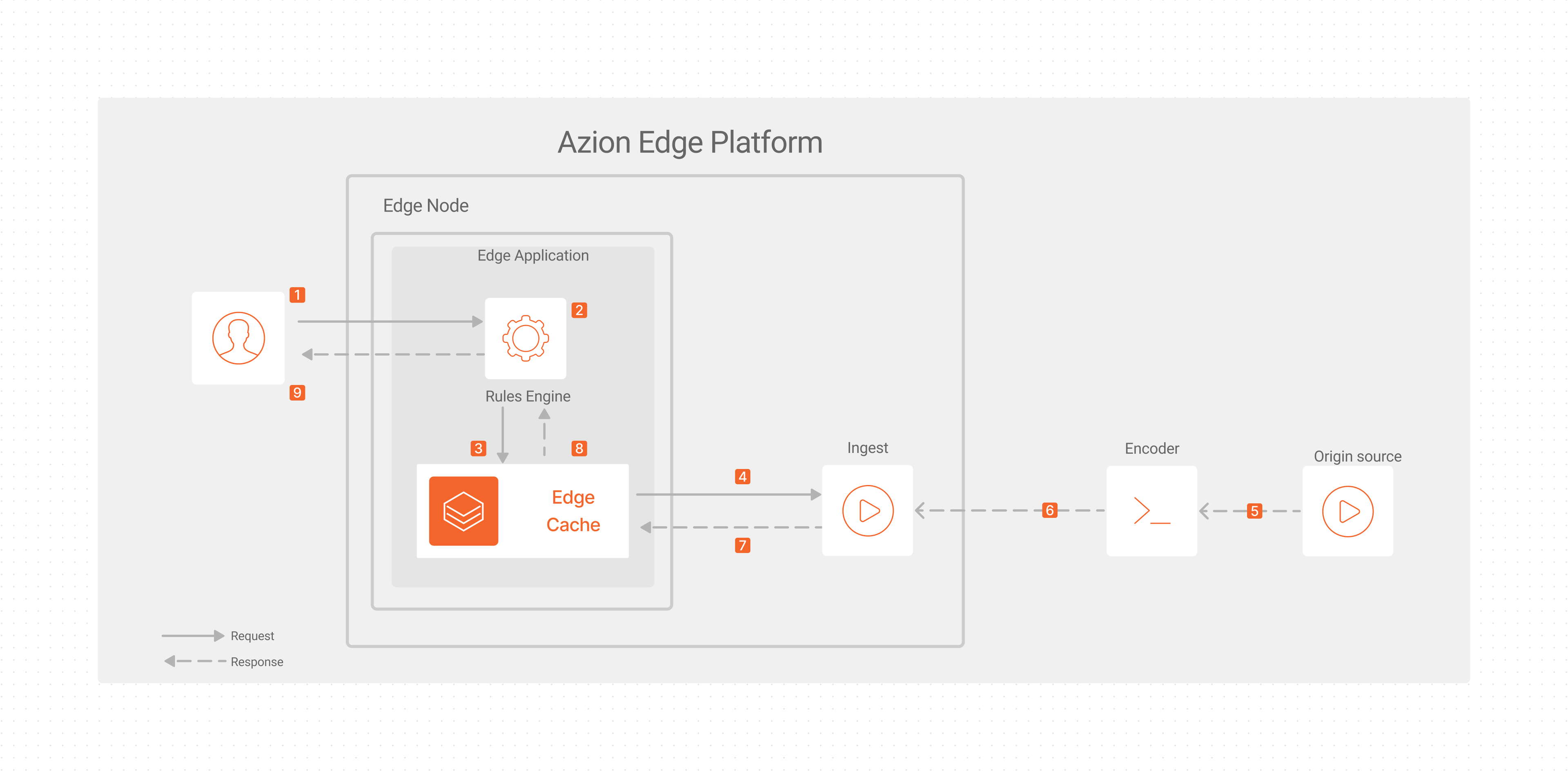Optimize the distribution of video content with live streaming delivery
Edge computing transforms live streaming delivery by optimizing the distribution of high-quality video content. This architecture leverages advanced features like real-time transcoding and adaptive bitrate streaming, which, along with intelligent caching, enable seamless experiences for viewers. The distributed nature of edge computing allows for content to be processed and stored closer to the user, reducing latency and bandwidth constraints, and ensuring a high-quality stream even during periods of high demand.
This solution is ideal for content providers who require high fidelity and low latency for live events, e-sports, and educational content. Utilizing a network of edge locations, the platform ensures efficient delivery and scalability, while providing enhanced security features for stream protection.
Live Streaming Delivery Architecture Diagram

Live Streaming Delivery Dataflow
- The client (player) initiates a request to access a live stream.
- The request reaches the healthiest edge node, which is part of Azion’s globally distributed Edge Network.
- The edge application processes the request through the Rules Engine, applying security measures, origin configurations, and caching policies.
- If the requested stream content is cached in the Edge Cache (recently received live content), it’s immediately delivered to the client.
- If the content isn’t cached, the request is forwarded to the ingest component within the Azion Edge Platform.
- The source generates the content (video/audio).
- The encoder converts the content into a data package in RTMP or HLS format and sends it to the Azion for Ingestion.
- The Ingest component (Live Ingest for RTMP or Tiered Cache for HLS) receives the encoded transmission, processes it, and answers to the edge node in HLS format (the same package is reutilized for all the edge nodes).
- The transcoded stream is cached in the Edge Cache for subsequent high-demand simultaneous client requests.
- The Rules Engine may be programmed to intercept errors, apply additional rules, process HTTP response headers, etc.
- The processed transmission is delivered to the client, completing the live-streaming process. The user plays the content.
Components
- Edge Application allows you to build applications on top of the Azion Edge Platform and deliver your content.
- Edge Cache enables you to configure how your application caches content to reduce latency and increase transfer rates.
- The Ingest component receives signal from encoders and distributes content in HLS format. It works as the origin for the edge application.
Implementation
- Create an edge application.
- Create a domain and associate it with the edge application.
- Set up and enforce cache policies for HLS in the edge application.
- Configure your source and encoder pointing to Azion Ingest DNS entries.
- Stream your content via Azion Edge Platform.
Related docs
Contributors